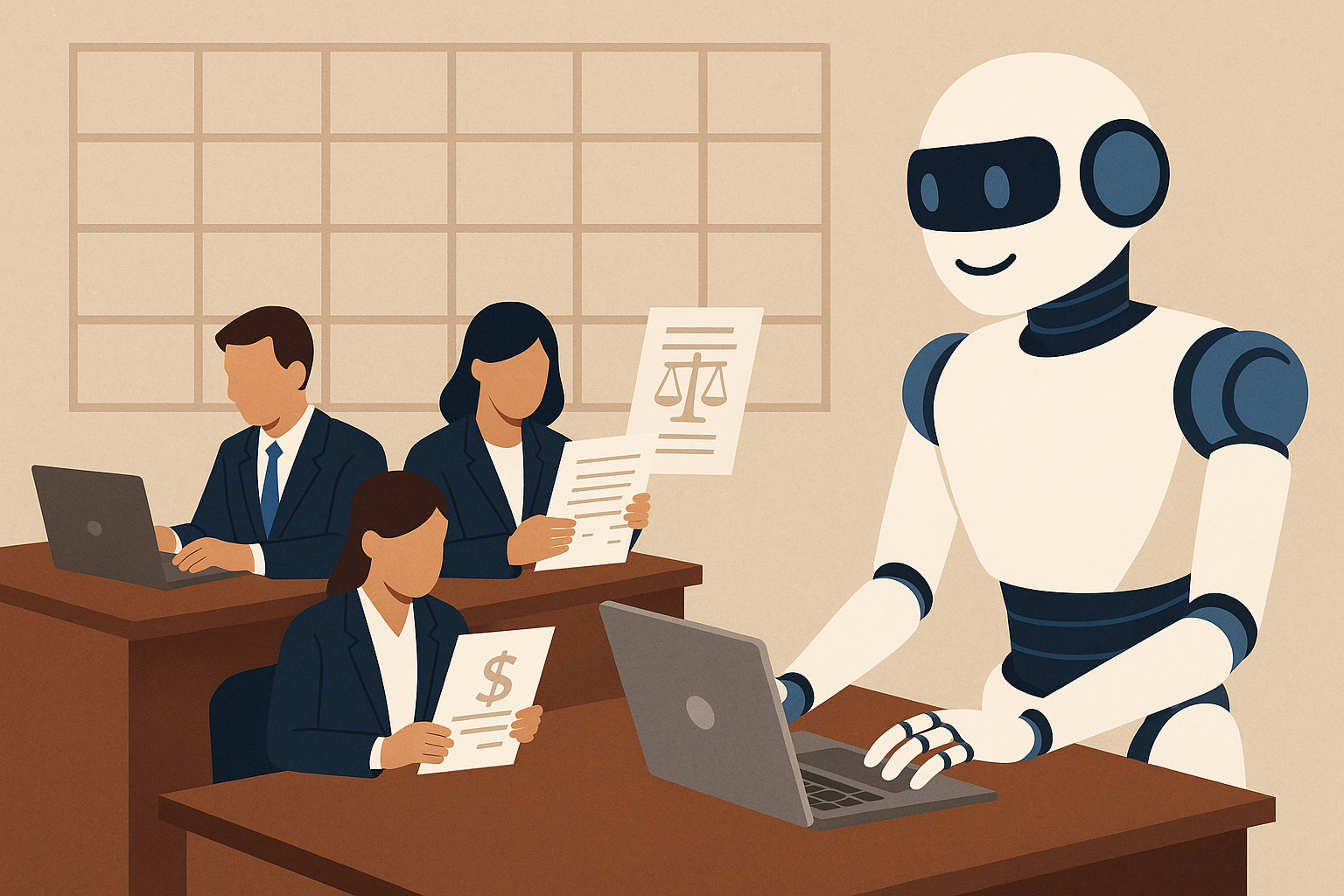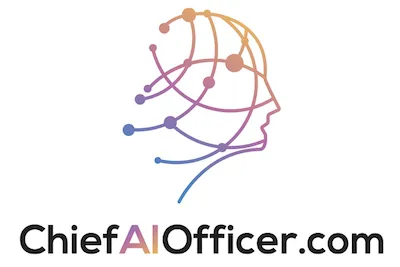If consulting, law, and accounting no longer relied on armies of billable hours, the entire structure of these $5 trillion industries would be fundamentally transformed. Navin Chaddha, managing director at Mayfield, is betting that AI will be the catalyst for this change, starting now, not decades from now. With AI streamlining processes and enhancing decision-making, firms could focus on value-driven services rather than time-based metrics. This shift would not only improve client satisfaction but also challenge traditional roles within these industries, as firms reposition themselves in a rapidly evolving landscape. As the demand for innovative solutions grows, the AI talent war among tech giants will likely play a critical role in shaping the future of consulting, law, and accounting.
AI "teammates" are already automating large portions of repetitive, labor-intensive tasks including data entry, document review, bookkeeping, and standard legal document drafting. This automation doesn’t just improve efficiency, it destroys the economic foundation that built these industries.
The evidence is already emerging: Gruve, an AI-driven consulting startup, grew a security services business from $5 million to $15 million in six months, achieving 80% gross margins with outcome-based pricing. While traditional firms debate AI adoption, AI-first companies are proving that professional services can operate like software businesses.
The Billable Hour Death Spiral
AI teammates are expected to automate the routine, billable work that generates the majority of revenue for consulting, law, and accounting firms. When 80% of work can be done by AI, the traditional time-based billing model becomes economically obsolete.
The death spiral reveals how AI attacks the fundamental business model rather than just improving operational efficiency. Professional services firms built their entire economic structure around human time scarcity, and AI eliminates that scarcity permanently. This shift challenges the traditional billing methods and client relationships established by these firms. As a case in point, the Coupa AI revolution in spend management illustrates how technology can transform spend analysis, enabling companies to optimize their financial strategies without relying on human labor. The implications are profound, as firms must rethink their value propositions in an era where AI-driven efficiencies redefine competitive advantage.
Firms that continue relying on billable hours will find themselves unable to compete with AI-enhanced services that deliver superior results at fraction of traditional costs through outcome-based pricing models.
The Software-Like Margins Revolution
If 80% of professional services work is handled by AI, firms could achieve gross margins of 80-90%, compared to the much lower margins typical in people-heavy services businesses.
The margin revolution demonstrates how AI transforms professional services from labor-intensive businesses into software-like operations that scale without proportional cost increases. As these advancements unfold, firms can leverage technology to enhance efficiency and streamline workflows, ultimately improving service delivery. A prime example of this transformation is seen with Bloomberg’s AI impact on finance, where analytical capabilities and automated processes lead to quicker decision-making and better investment strategies. This shift not only elevates the quality of services but also creates opportunities for new business models within the industry.
Traditional firms operating with human-dependent cost structures will find themselves unable to compete with AI-enhanced operations that achieve software economics in professional services markets.
The Gruve Success Model
Gruve grew from $5 million to $15 million in six months with 80% gross margins using outcome-based pricing where clients only pay when security events occur, not for ongoing staffing.
The success model proves that AI-first professional services can achieve rapid growth and superior margins through value-based pricing rather than time-based billing that limits revenue potential.
Professional services firms that maintain traditional pricing models will find themselves unable to compete with AI-enhanced services that deliver better results at lower costs through outcome optimization.
The Automation Portfolio Impact
AI is already automating document review, compliance checks, fraud detection, invoice generation, legal billing, and administrative tasks that traditionally required extensive human labor across consulting, law, and accounting.
The automation portfolio reveals how AI affects entire professional services workflows rather than isolated tasks, creating systematic competitive advantages that traditional approaches cannot match.
Firms that approach AI through limited task automation miss opportunities for comprehensive workflow transformation that AI-first competitors achieve through integrated automation strategies.
The Market Access Expansion
Millions of small businesses that cannot afford traditional consulting or legal fees could access these services as affordable, on-demand software when AI reduces delivery costs dramatically.
The market expansion demonstrates how AI transforms professional services from high-cost expert services to accessible business utilities that serve previously underserved market segments.
Traditional firms focused on premium markets will find themselves competing for shrinking high-end segments while AI-enabled services capture mass market opportunities through affordable delivery models.
The Innovator’s Dilemma Reality
Major firms including McKinsey, Accenture, and Big Four accounting firms face innovator’s dilemma where existing revenue models and client relationships make it difficult to adopt disruptive utility-like pricing without cannibalizing current business.
The dilemma reveals how market leaders become vulnerable to disruption when new business models threaten existing revenue streams that support current organizational structures.
Established firms that protect existing business models will find themselves displaced by AI-first competitors that build new economic models around AI capabilities rather than human labor.
The Strategic Market Targeting
AI-driven startups are targeting neglected markets including small and midsize businesses rather than competing directly with industry giants for premium enterprise clients.
The targeting strategy demonstrates how AI disruption typically begins in underserved markets before moving upmarket to challenge established players with superior economics and capabilities.
Traditional firms that ignore mass market opportunities will find themselves vulnerable when AI-enhanced competitors establish market position through volume before challenging premium segments.
The Workforce Transformation Reality
Job displacement is inevitable for roles focused on repetitive tasks, but experts predict humans will shift toward higher-value strategic and relationship-based work as AI handles routine professional services tasks.
The transformation reality reveals how AI changes professional services employment by eliminating low-value work while creating opportunities for high-value human capabilities that AI cannot replicate.
Professional services firms that fail to manage workforce transition will achieve lower AI adoption and value compared to organizations that retrain employees for AI-enhanced higher-value roles.
The Predictive Pricing Evolution
Generative AI enables predictive pricing and automated invoicing that makes costs more transparent while reducing revenue leakage from missed billable hours that traditionally limit professional services profitability.
The pricing evolution demonstrates how AI creates revenue optimization opportunities beyond cost reduction by improving pricing accuracy and eliminating administrative inefficiencies.
Firms that maintain traditional billing approaches will find themselves at revenue disadvantages compared to AI-enhanced pricing systems that optimize both cost and revenue through automated intelligence.
The Client Experience Transformation
AI-powered professional services can provide faster response times, more consistent quality, and transparent pricing that traditional human-dependent services cannot match at comparable cost levels.
The experience transformation reveals how AI creates client value propositions that extend beyond cost reduction to include service quality improvements that traditional approaches cannot achieve.
Professional services firms that focus only on cost competition miss opportunities for client experience enhancement that AI capabilities provide through superior speed, consistency, and transparency.
The Competitive Timing Advantage
Early AI adopters in professional services are seeing rapid growth and profitability while traditional firms debate implementation strategies and worry about disrupting existing business models.
The timing advantage demonstrates how professional services AI transformation rewards rapid adoption over careful planning when market dynamics favor AI-enhanced service delivery.
Firms that delay AI transformation will find competitive gaps too large to close through traditional service improvements once AI-first competitors establish dominant market positions.
The Industry Structure Revolution
AI transforms professional services industry structure by enabling new entrants to compete effectively against established firms through superior economics rather than requiring extensive professional networks or regulatory advantages.
The structure revolution reveals how AI disruption affects competitive dynamics by reducing barriers to entry while creating new competitive advantages based on technology rather than traditional professional services assets.
Established firms that rely on traditional competitive advantages will find themselves vulnerable to AI-enhanced competitors that achieve superior results through technology rather than human expertise alone.
The Regulatory Adaptation Challenge
Professional services firms must navigate regulatory requirements while implementing AI transformation that fundamentally changes service delivery models and professional responsibility structures.
The adaptation challenge demonstrates how AI transformation in regulated industries requires sophisticated approaches that maintain compliance while achieving competitive advantages through technology enhancement.
Firms that delay AI adoption due to regulatory concerns will find themselves competitively disadvantaged compared to organizations that solve regulatory challenges through careful AI implementation and governance frameworks. In the rapidly evolving landscape of technology, proactive companies that embrace AI can leverage its capabilities to enhance operational efficiency and decision-making. For instance, HSBC’s AI financial crime detection system has set a benchmark in the industry by utilizing advanced algorithms to identify suspicious activities effectively. By adopting such innovative solutions, organizations not only mitigate the risks of non-compliance but also gain a competitive edge in their respective markets.
The Client Education Imperative
Professional services firms implementing AI must educate clients about new service delivery models and pricing structures that differ significantly from traditional billable hour approaches.
The education imperative reveals how AI transformation requires client relationship management that explains value propositions rather than just implementing new technology behind existing service models.
Firms that implement AI without client education will achieve limited adoption and value compared to organizations that help clients understand and appreciate AI-enhanced service benefits.
The Partnership Strategy Evolution
Professional services firms are forming partnerships with AI technology providers rather than developing proprietary AI capabilities that require extensive technical expertise and development resources.
The partnership evolution demonstrates how professional services AI transformation leverages existing AI capabilities rather than requiring internal technology development that diverts resources from core professional expertise.
Firms that attempt to build AI capabilities internally will achieve slower transformation compared to organizations that partner with established AI providers for rapid capability deployment.
The Quality Assurance Integration
AI-enhanced professional services require sophisticated quality assurance processes that ensure AI-generated work meets professional standards while maintaining human oversight for complex decisions. Implementing such processes also involves continuous monitoring and evaluation of AI outputs to refine algorithms and improve accuracy. Furthermore, using AI agents in the workplace can streamline workflows, allowing professionals to focus on higher-level strategic tasks while still relying on AI for data-driven insights. Ultimately, balancing AI capabilities with human expertise fosters an environment where both can thrive effectively.
The quality integration reveals how successful professional services AI implementation requires systematic approaches to maintaining professional standards while capturing AI efficiency and cost benefits.
Firms that implement AI without quality assurance will face professional liability and client satisfaction challenges that threaten AI transformation success and market positioning.
The Future Professional Reality
AI transformation establishes professional services reality where technology-enhanced delivery becomes essential for competitive positioning rather than optional efficiency improvement.
The future reality reveals why professional services AI transformation requires immediate strategic commitment rather than gradual evaluation that delays competitive advantage while AI-first competitors establish market dominance.
The choice facing every professional services executive is whether to embrace AI transformation that fundamentally changes business models or continue traditional approaches while AI-enhanced competitors establish insurmountable economic and service advantages.
The Strategic Response Framework
Professional services firms can respond to AI disruption through transformation strategies that embrace new business models rather than defending existing approaches against superior AI-enhanced alternatives.
The response framework prioritizes outcome-based pricing over time-based billing, AI augmentation over human-only service delivery, and market expansion over premium segment protection.
Organizations that apply proactive transformation strategies will achieve competitive advantages while firms that defend traditional models will struggle to compete with AI-enhanced service delivery and economics.
The evidence is overwhelming: AI is transforming professional services from labor-intensive businesses into software-like operations with superior margins, faster delivery, and broader market access. The strategic choice facing every professional services leader is whether to lead this transformation or become obsolete defending business models that AI makes economically unsustainable. Embracing this change requires a shift in mindset, as leaders must prioritize the integration of AI applications in business strategies to enhance efficiency and drive innovation. Those who proactively adapt can leverage data-driven insights to deliver tailored services and create new offerings that meet evolving client needs. Conversely, resistance to these advancements risks stunting growth and limiting competitive advantage in an increasingly automated landscape. The urgency of embracing this shift cannot be overstated; those who resist change risk being left behind in a rapidly evolving marketplace. Developing a clear strategy is essential for navigating these changes effectively, which is why the AI plan matters. As firms leverage AI to enhance efficiency and create value, they position themselves not only to survive but to thrive in a future where adaptability is key. In this context, embracing change is not just advantageous; it is essential for survival. As AI agents transforming the business landscape gain traction, they pave the way for innovative solutions that enhance client engagement and optimize operational efficiency. Professional services firms that adapt and leverage these technologies will find new avenues for growth and differentiation in an increasingly competitive market.




